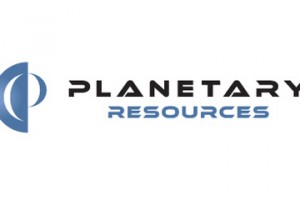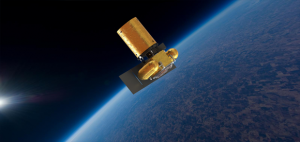The Plan to Mine Outer Space
A group of successful and distinguished individuals are starting a company to capitalize on assets floating around in space. The company is called Planetary Resources. They held a press conference describing their aspirations this afternoon. While this won’t happen overnight, the company has an incredible staff with immense experience and desire to succeed, and they are committed to success. Here’s some of the revolutionary ideas from their plan.
Planetary Resources has confirmed that they will be mining near Earth asteroids for water and precious metals. Private companies can now achieve what once was only possible by governments. Just one asteroid could contain more platinum than has ever been mined in the history of Earth. Between Mars and Jupiter there are millions of asteroids, but that won’t be our focus yet. We’re looking at near Earth asteroids. These near Earth asteroids are in co-orbital locations, orbiting the sun with the Earth.
There at 9,000 current near-Earth asteroids known, but we believe there are actually between 50,000-100,000 of these near Earth asteroid over 50 meters in size. The plan is to use robots to complete their tasks instead of astronauts. Planetary Resources will be launching a three step exploration program, while simultaneously providing learning aids, as their crafts will double as public space telescopes! Planetary Resources thinks they can mitigate the extreme risk and high costs of this mission by utilizing small teams that move rapidly.
The two categories of valuable materials found on asteroids:
1. Water- Believe it or not, water exists in an abundance on asteroids. This will enable us to support life in space. Water is the most valuable material in space. Hydrogen and Oxygen are actually also the most efficient forms of rocket propulsion, past space shuttles have run off of these. It’s thought one asteroid could contain enough water to fuel every single space shuttle ever launched.
2. Precious Metals- Any type of material that is very difficult to find on Earth. The rare areas on Earth where Platinum is found are actually areas where an asteroid hit millions of years ago. These metals are useful in industrial applications, medical devices, cars and electronics. Mining of these materials will do for precious metals what new mining techniques did for aluminum. Aluminum was once rare and has now is being used for just about everything.
Three step plan for Asteroid Mining:
1. Fully develop our technology base, launch our first spacecraft within 24 months.
2. Prospecting- We need to determine which asteroids to target first. We do only know about one percent of the ones out there. We need to follow them to figure out where on their bodies lies the highest concentration of important materials. We also need to perfect refueling techniques.
3. Launch swarms of crafts towards these targets. Deliver the resources to their point of need.
Major Goals of the Project-
1. Change the way the world thinks about natural resources.
2. Ensure humanity’s prosperity.
3. Create a thriving space economy beyond the Earth.
4. Create deep space robots that learn how to mine asteroids.
5. Create a network of ‘gas’ stations that open up the roadways of the solar system.
6. Protect the Earth by mining in space.
7. Create a fleet of all robotic explorers that cost 100x less than current spacecrafts. It has cost from nine to ten figures in the past, Planetary Resources thinks we can create explorers for 10′s of millions or less.
8. Give everyone better access to space.
The company will first release a series of spacecrafts called the Arkyd. It will consist of three models.
100 series: The 100 or Leo, will do the prospecting. Will launch within 2 years. The Arkyd 100 will operate in low Earth orbit as a telescope. The 100 series will help us to look out at the asteroids, as well as back to our selfs. They will eventually be accessible to school children. The 100 has been compared to the personal computer in that it was once a rare tool that has been made available to a large audience.
200 series- The Arkyd 200 or Interceptor will include propulsion systems to leave the Earth. They will feature upgraded scientific instruments to inspect asteroids up close. Will follow asteroids around. Expect the series 200 to begin in around 3-4 years.
300 series- The Arkyd 300 or Rendezvous Prospector will implement a sort of swarm on asteroids. They will work in conjunction with other 300 models, distributing the risk among multiple spacecrafts. Will use cognitive science and cloud computing to achieve autonomy between crafts.
“We know this is hard, we know we’re not always going to succeed. When failure is not an option, success gets really expensive. We will live with and learn from our failures.”
While this seems like an incredibly lofty plan, human space tours are actually beginning very soon. Space has become an affordable and attainable frontier. It was an arduous step by step process to the moon, and Planetary Resources will take the same approach to access the resources of space. The company admits that we won’t have a permanent precense in space unless we can reduce the cost and complexity of life support systems. Will PR succeed on this mission? It seems like the minds and the money are in place to do so. The main question is, when will investors on Earth actually see a return?
Comments
Tags: asteroid mining, asteroid mining plan, how much platinum is there, list precious metals, moon mining, near earth asteroid, plan to mine asteroid, planetary resources, space economy
Trackback from your site.



